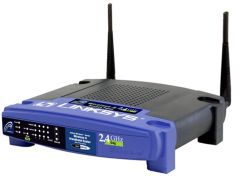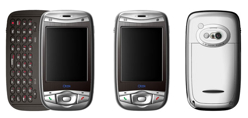The Peer-to-Peer Wireless Network Confederation
In metropolitan areas, public infrastructures for
high-speed wireless networking can be built through the
private contributions of individual micro-operators who
use their Internet-connected Wireless LANs (WLANs) to
forward foreign traffic from and to nearby low-mobility
clients.
We have designed and implemented a practical WLAN aggregation
scheme that:
- Assumes that micro-operators are selfish and
do not trust each other, and uses a secure incentive technique
to encourage their contribution.
- Protects the real-world identities of micro-operators and
clients by relying only on disposable opaque identifiers (public keys).
- Is fully distributed, open to all, and does not rely on any authority to
resolve disputes or to control membership.
- Is automated, using standard hardware and software that we developed for
some of the main available platforms (Linux-based WLAN
access points and Windows Mobile-based cell phones).
Features overview
Linksys WRT54G

The MMLAB reference implementation of a P2PWNC-enabled WLAN access point is packaged
as a custom firmware for the Linksys WRT54G WLAN access point,
a $50 Linux-based device that is commonly used in Wireless Community Networks
QTEK 9100

The MMLAB reference implementation of a P2PWNC client, along with a proof-of-concept VoIP client, is packaged as a Windows Mobile application for the QTEK 9100 WLAN-enabled GSM cell phone
- P2PWNC relies on reciprocity: only users that own home WLAN networks and serve others may enjoy the same benefit.
- P2PWNC is designed as an incentive scheme for Wireless Community Networks: to respect their open and self-organized nature, no registration with Trusted Third Parties or other authorities is required, and P2PWNC peers use free identities.
- The P2PWNC Reciprocity Algorithm, Gossiping Protocol, and the Receipt Generation Protocol are designed to encourage cooperation between selfish peers.
- Each time WLAN service is provided and consumed, an unforgeable receipt is generated, signed by the consumer.
- The transaction history of a Wireless Community Network running P2PWNC is represented as a receipt graph.
- Only short-term history is important: receipt servers discard old receipts when full.
- The receipt graph is used as input to a reciprocity algorithm that identifies free-riders using network flow techniques.
- In centralized mode, a central server holds all receipts.
- In decentralized mode, multiple receipt servers hold subsets of the receipt graph.
- With gossiping (in decentralized mode), mobile users share some of their receipts that show they are good providers. Receipt servers, when full, do not accept receipts that are older than the oldest receipt they contain.
- The MMLAB reference implementation of the P2PWNC protocol includes a P2PWNC client, a centralized receipt server, and a P2PWNC access point, which can support a collocated receipt server (for decentralized mode).
- The MMLAB reference implementation of a P2PWNC-enabled WLAN access point is packaged as a custom firmware for the Linksys WRT54G (WRT54GS, WRT54GS4, other OpenWRT compatible access points) WLAN access point, a $50 Linux-based device that is commonly used in Wireless Community Networks.
- Our latest version includes QoS control in the access point, and a proof-of-concept VoIP client for the QTEK 9100 phone, which includes a VPN client that connects to the home VPN gateway of the user, which we host on the Linksys WRT54G (we support both PPTP and L2TP/IPsec VPN variants).
- Simulated evolutionary games have been used to evaluate the P2PWNC reciprocity algorithm and gossiping protocol.
- P2PWNC is design to resist Sybil attacks and collusion-based attacks by selfish users who attempt to free-ride.
Motivation
- The density of WLANs and the low-cost of wired (DSL/Cable) broadband in metropolitan areas.
- The availability of WLAN-enabled mobile phones and the need for low-cost ubiquitous wireless access.
- The availability of inexpensive WLAN access points that can support the P2PWNC protocol without help from other devices.

